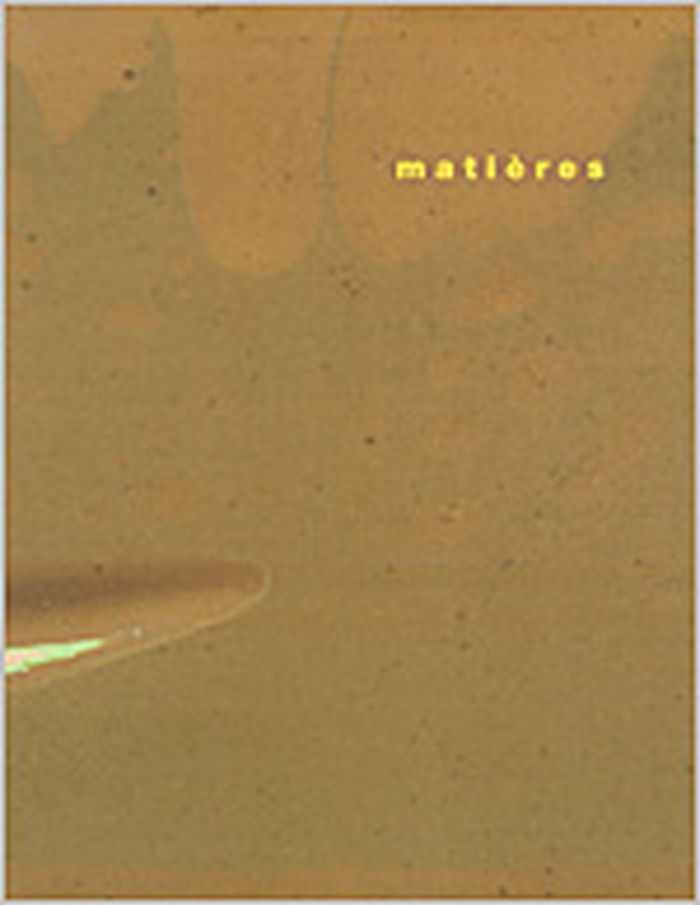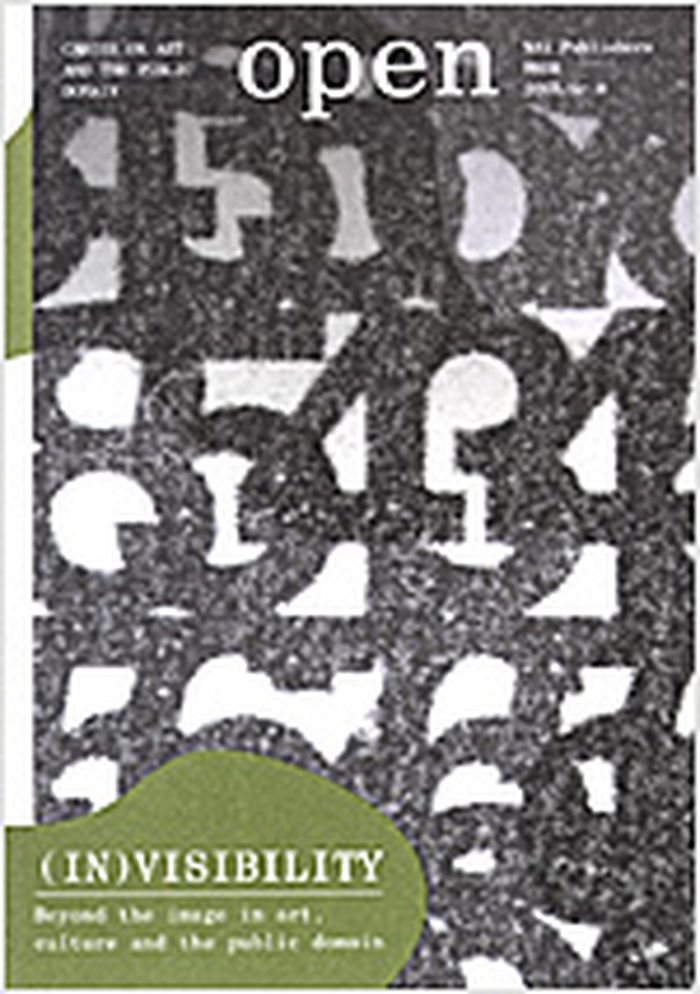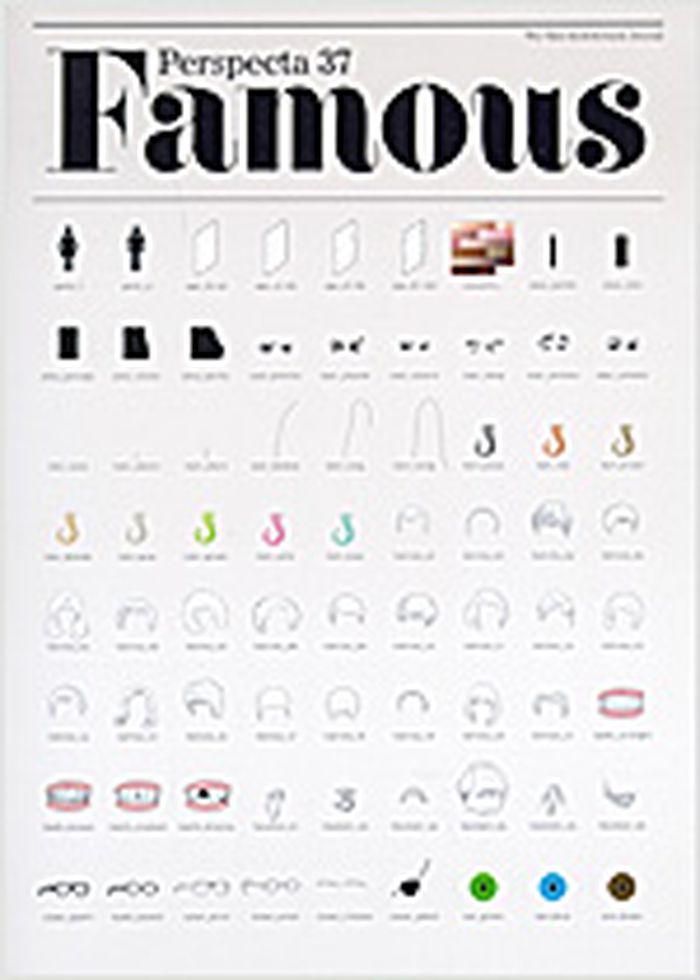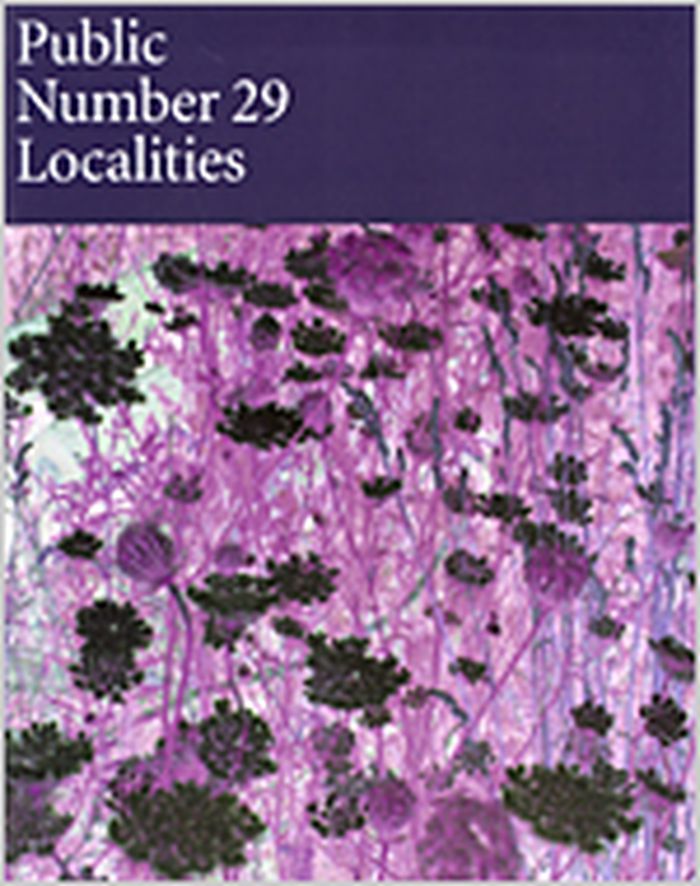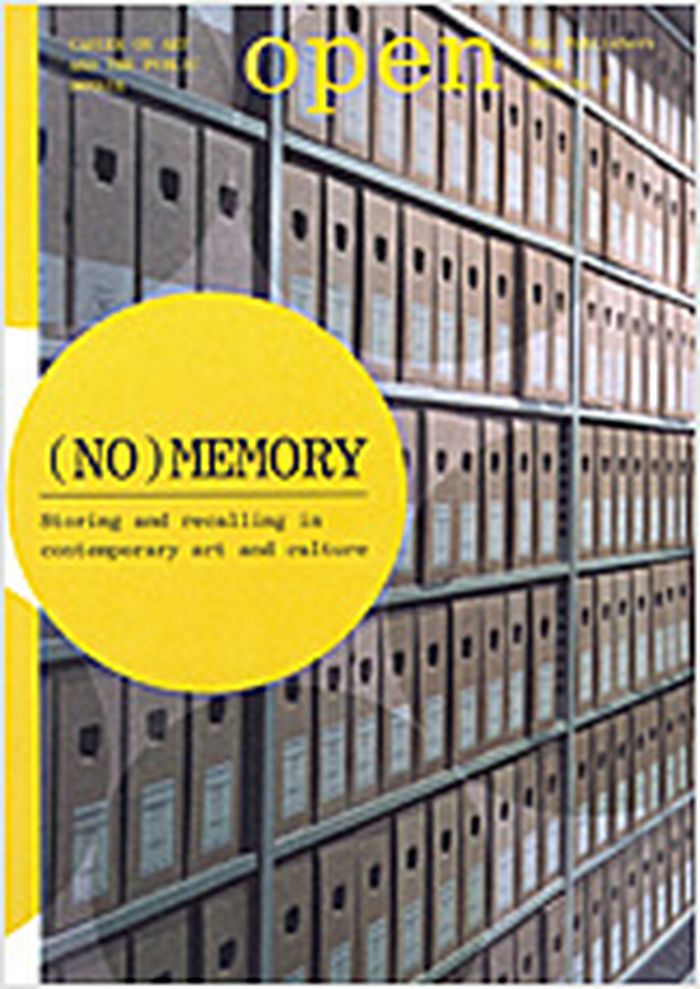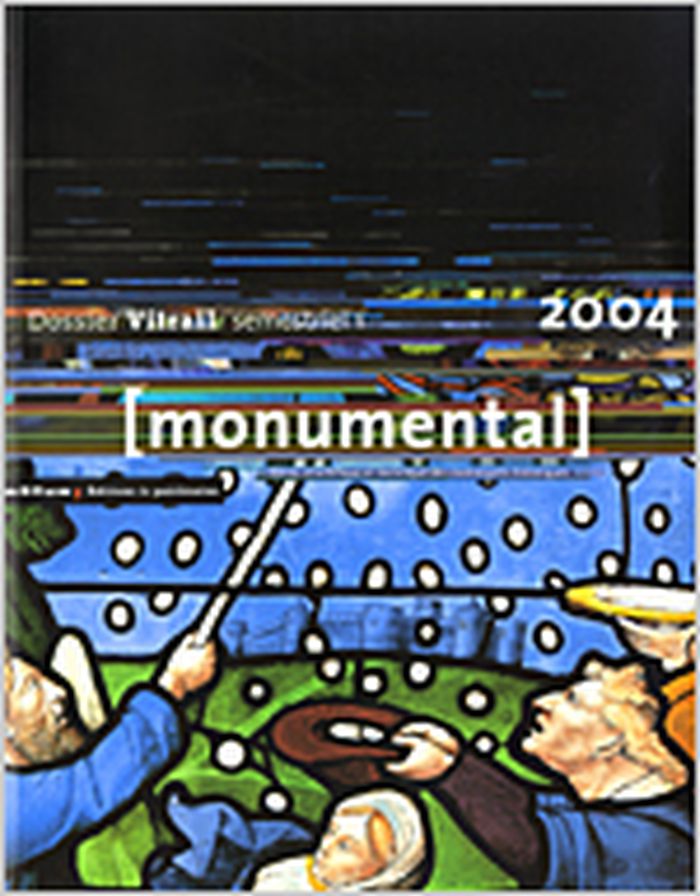a+t : hybrids II
$48.00
(disponible sur commande)
Résumé:
Illustrated throughout with photographs, technical notes and drawings and computerised images, highlights include : Nieto Sobejano's Neuer Augustinerhof, Nuremberg; OMA's Bryghusprojektet, Copenhagen; Dominique Perrault's EWHA Campus Seoul; EM2N's Toni Areal, Zurich; and Steven Holl Architects' Vanke Centre in Shenzhen.
a+t : hybrids II
Actions:
Prix:
$48.00
(disponible sur commande)
Résumé:
Illustrated throughout with photographs, technical notes and drawings and computerised images, highlights include : Nieto Sobejano's Neuer Augustinerhof, Nuremberg; OMA's Bryghusprojektet, Copenhagen; Dominique Perrault's EWHA Campus Seoul; EM2N's Toni Areal, Zurich; and Steven Holl Architects' Vanke Centre in Shenzhen.
Revues
Matières 7
$57.00
(disponible sur commande)
Résumé:
Qu'est-ce qui préside à la définition de la forme d'un bâtiment, selon quelles modalités est-elle conçue, quels principes engage-t-elle, quelles régles convoque ou produit-elles? Ces questions sont posées par toute investigation théorique concernant l'architecture. Et, une nouvelle fois, elles sont celles auxquelles les contributions de cette septième livraison de(...)
Revues
mars 2005, Lausanne
Matières 7
Actions:
Prix:
$57.00
(disponible sur commande)
Résumé:
Qu'est-ce qui préside à la définition de la forme d'un bâtiment, selon quelles modalités est-elle conçue, quels principes engage-t-elle, quelles régles convoque ou produit-elles? Ces questions sont posées par toute investigation théorique concernant l'architecture. Et, une nouvelle fois, elles sont celles auxquelles les contributions de cette septième livraison de "Matières" tentent de répondre, ou plutôt tentent d'apporter plusieurs réponses car les problématiques des auteurs sont différentes les unes des autres, tout comme sont divers les bâtiments, les projets ou les thèmes auxquels ils s'intéressent. Les réponses se rejoignent cependant sur de nombreux points, à partir desquels il est possible de dessiner la trame de réflexions communes.
Revues
périodiques
Future anterior
$14.95
(disponible sur commande)
Résumé:
Historic preservation is at an important moment of rethinking. The field has grown exponentially in America since its first academic program was founded at Columbia University in 1965. Although initially concerned only with buildings, preservation has recently expanded to include the protection and creative interpretation of entire urban environments, landscapes,(...)
Future anterior
Actions:
Prix:
$14.95
(disponible sur commande)
Résumé:
Historic preservation is at an important moment of rethinking. The field has grown exponentially in America since its first academic program was founded at Columbia University in 1965. Although initially concerned only with buildings, preservation has recently expanded to include the protection and creative interpretation of entire urban environments, landscapes, highways, cultural traditions, artistic practices, and even specific “experiences” such as historic view sheds. Most importantly, historic preservation is beginning a significant re-clarification of its purposes, sharpening and deepening its focus on the contributions old architecture and artifacts make to our understanding of the human condition and how we should address and live in it. Future Anterior is the first and only journal in American academia to be devoted to the study and advancement of preservation, which brings together the interests of scholars and professionals in multiple disciplines such as architecture, art, history, philosophy, law, planning, materials science, cultural anthropology, conservation, and others. Future Anterior establishes an important and much needed forum for the critical examination of this expanding discipline, to spur challenges of its motives, goals, forms of practice and results. The appearance of Future Anterior signals the maturation of the field of preservation and a shift away from nostalgic antiquarianism towards an active involvement in the understanding and creative transformation of human environments. This turn in preservation is reflected in an increased interest in historic architecture and artifacts as expressive resources of great public importance. The destruction of patrimony, from the colossal Buddhas in Afghanistan to New York’s World Trade Center, is seen not just as barbarism but as sources of understanding about where we are going wrong and what we need to do next. In response, architects, planners, urban designers, and artists have been producing works which engage the public in new ways of reflecting and taking on the past not as constraint but as provocation.
périodiques
octobre 2004, New York
Revues
$36.00
(disponible sur commande)
Résumé:
In our culture, in which the media play a predominant role, there is an increasing emphasis on achieving visibility and transparency. Openness and communication are subservient to that visibility, and even seem to coincide with it more and more emphatically. At the same time, both notions form the foundations for social order and political power. In our over-visualized(...)
Open 8 : (in)visibility : beyond the image in art, culture and the public domain
Actions:
Prix:
$36.00
(disponible sur commande)
Résumé:
In our culture, in which the media play a predominant role, there is an increasing emphasis on achieving visibility and transparency. Openness and communication are subservient to that visibility, and even seem to coincide with it more and more emphatically. At the same time, both notions form the foundations for social order and political power. In our over-visualized culture, however, it seems as if every message or social agenda is being squeezed out in favour of styling, commerce and fashion. What position does art occupy in this, or what position should it occupy? In "Open" 8, guest editors Willem van Weelden and Jan van Grunsven write a general introduction, Brian Holmes explores (in)visibility as a tactic in art, and Jouke Kleerebezem asks who actually decides about (in)visibility in the public space; Camiel van Winkel writes over the visual deficit of contemporary culture; Dieter Lesage critically examines the proposals by OMA/AMO for a new iconography of Europe; Henk Oosterling investigates the FBI's prosecution of the Critical Art Ensemble; Jorinde Seijdel considers how media images are used as evidence for social and political events. "Open" 8 includes interviews with Arno van der Mark of DRFTWD, an Amsterdam-based multidisciplinary design bureau, and with the French research organization Bureau d'études, as well as an account of a roundtable discussion about a possible new legitimation for academic training in 'art and the public space'. The cahier also presents a column by the Belgian architect/author Wouter Davidts, photographic essays and book reviews.
Revues
périodiques
Open 6 (in)security
$36.00
(disponible sur commande)
Résumé:
There is a yearning for security in today's public domain. The individual and the community are increasingly demanding protection from and control over the space, themselves and others. A society of control is looming, but one lacking a clear idea about the nature and the origin of its underlying fears. This cahier examines the consequences of the current preoccupation(...)
Revues
août 2004, Rotterdam
Open 6 (in)security
Actions:
Prix:
$36.00
(disponible sur commande)
Résumé:
There is a yearning for security in today's public domain. The individual and the community are increasingly demanding protection from and control over the space, themselves and others. A society of control is looming, but one lacking a clear idea about the nature and the origin of its underlying fears. This cahier examines the consequences of the current preoccupation with security for the public space and the visual arts. What are the implications for the functioning of the public domain, for its arrangement, design and experience? And how does this influence the task and perception of art? From art, architecture, philosophy and politics come theoretical and practical scenarios, proposals and visions that expose something of today's security paradigm, advocate alternative (conceptual) models or offer insights into the current ethics and aesthetics of security. Gijs van Oenen subjects the 'new securityscape' to a critical analysis. Lieven De Cauter digs into the various strata of the new fear. Sean Snyder presents images from his Temporary Occupation project. Thomas Y. Levin looks at how artists deal with surveillance in the public space. Sven Lütticken reflects on the concept of a 'human park' in philosophy, art and media. Harm Tilman focuses on architecture in a society of control. Mark Wigley analyses the issue of security in relation to the World Trade Center buildings in New York. Hans Boutellier wishes art would apply the brakes to the security Utopia. Jouke Kleerebezem calls for vigilance in the information society. Willem van Weelden discusses the project in Kanaleneiland, Utrecht. Q.S. Serafijn shows multiple dimensions of the interactive D-Tower in Doetinchem. Mark Wigley dissects the abode of the Unabomber.
périodiques
août 2004, Rotterdam
Revues
Perspecta 37 : famous
$22.95
(disponible sur commande)
Résumé:
Does fame empower architecture or undermine it? Does the star power or cult status of an architect enhance the art or dilute it? This issue of Perspecta examines the inner workings of fame as it relates to architecture though media and culture. It looks at how the commodification of architecture affects the design process - whether fame emphasizes all the wrong aspects of(...)
Revues
juin 2005, Cambridge, Mass.
Perspecta 37 : famous
Actions:
Prix:
$22.95
(disponible sur commande)
Résumé:
Does fame empower architecture or undermine it? Does the star power or cult status of an architect enhance the art or dilute it? This issue of Perspecta examines the inner workings of fame as it relates to architecture though media and culture. It looks at how the commodification of architecture affects the design process - whether fame emphasizes all the wrong aspects of architecture or provides the only way an architect can produce truly ambitious projects. How does architecture generate fame? And how does fame generate architecture? Celebrity permeates all levels of contemporary society; architecture, academia, the architectural press, and the mainstream media all play a role in promoting the mystique of the designer genius. The tradition of learning through apprenticeship and the struggle to have projects commissioned and built perpetuate the importance of the famous architect. Does this serve architecture or only the architectural star? The contributors to Perspecta examine both sides of the argument: Architecture moves forward through a process of innovation; fame provides the architect with the leverage needed to accomplish innovation. Or is it that fame, because of its relationship to the media and popular tastes, inevitably dilutes the quality of the architecture? Does "famous" architecture glorify only itself and neglect the people, the values, and the functions that it must serve?
Revues
périodiques
Exposé no 4 : la maison
$71.95
(disponible sur commande)
Résumé:
Ce numéro retrace une archéologie des multiples approches de la maison dans l'art contemporain des avant-gardes à nos jours. Il présente les travaux des architectes les plus avant-gardistes tout en retraçant de façon conceptuelle et ludique l’histoire et l'évolution du concept "d’habiter".
Exposé no 4 : la maison
Actions:
Prix:
$71.95
(disponible sur commande)
Résumé:
Ce numéro retrace une archéologie des multiples approches de la maison dans l'art contemporain des avant-gardes à nos jours. Il présente les travaux des architectes les plus avant-gardistes tout en retraçant de façon conceptuelle et ludique l’histoire et l'évolution du concept "d’habiter".
périodiques
octobre 2004, Orléans
Revues
Public 29 : localities
$20.00
(disponible sur commande)
Résumé:
This issue of "Public" approaches the concept of locality in a dialectical fashion - seeing in it new possibilities for translocalism, diverse coalitions, and critical engagements as well as new reactionary articulations of market fundamentalism and commodified difference.
Revues
janvier 1900, Toronto
Public 29 : localities
Actions:
Prix:
$20.00
(disponible sur commande)
Résumé:
This issue of "Public" approaches the concept of locality in a dialectical fashion - seeing in it new possibilities for translocalism, diverse coalitions, and critical engagements as well as new reactionary articulations of market fundamentalism and commodified difference.
Revues
$36.00
(disponible sur commande)
Résumé:
The modern design and perception of the public domain is to a large degree determined by the tension between different memories - individual and collective, old and new, indigenous and immigrant. This makes memory a topical theme in the public domain, and its content, management and place are in urgent need of renewed consideration. How can one actively make use of the(...)
Open 7 (no)memory : storing and recalling in contemporary art and culture
Actions:
Prix:
$36.00
(disponible sur commande)
Résumé:
The modern design and perception of the public domain is to a large degree determined by the tension between different memories - individual and collective, old and new, indigenous and immigrant. This makes memory a topical theme in the public domain, and its content, management and place are in urgent need of renewed consideration. How can one actively make use of the information that is stored in modern-day 'places of memory'? What role does art play in this? Is collective memory even a possibility these days? How can cultural heritage be made accessible without transforming city and countryside into one big open-air museum? And what are the implications of new media and digital storage technologies for the social and historical processes of preserving and remembering? Rudi Laermans analyses the modern-day 'heritage regime'. Frank van Vree examines the role of the contemporary monument. Cor Wagenaar advocates the introduction of time as an instrument for the Belvedere Policy. Wolfgang Ernst considers how the archive becomes a literal metaphor in a digital culture. Nico Bick photographed various archives. Jorinde Seijdel takes a closer look at the visual archive of Bill Gates. Sven Lütticken writes about the conspiracy of openness that is apparently at work in the mass media. Geert Lovink interviews artist and archivist Tjebbe van Tijen. Artists' contributions from Joke Robaard, Nico Dockx, Hans Aarsman, Arnoud Holleman and Barbara Visser. Other contributions by Henk Oosterling, Brigitte van der Sande, Stef Scagliola, Jordan Crandall and Paul Meurs.
Revues
$57.95
(disponible sur commande)
Résumé:
Dossier vitrail
Monumental, semestriel 1 : dossier vitrail
Actions:
Prix:
$57.95
(disponible sur commande)
Résumé:
Dossier vitrail
Revues

